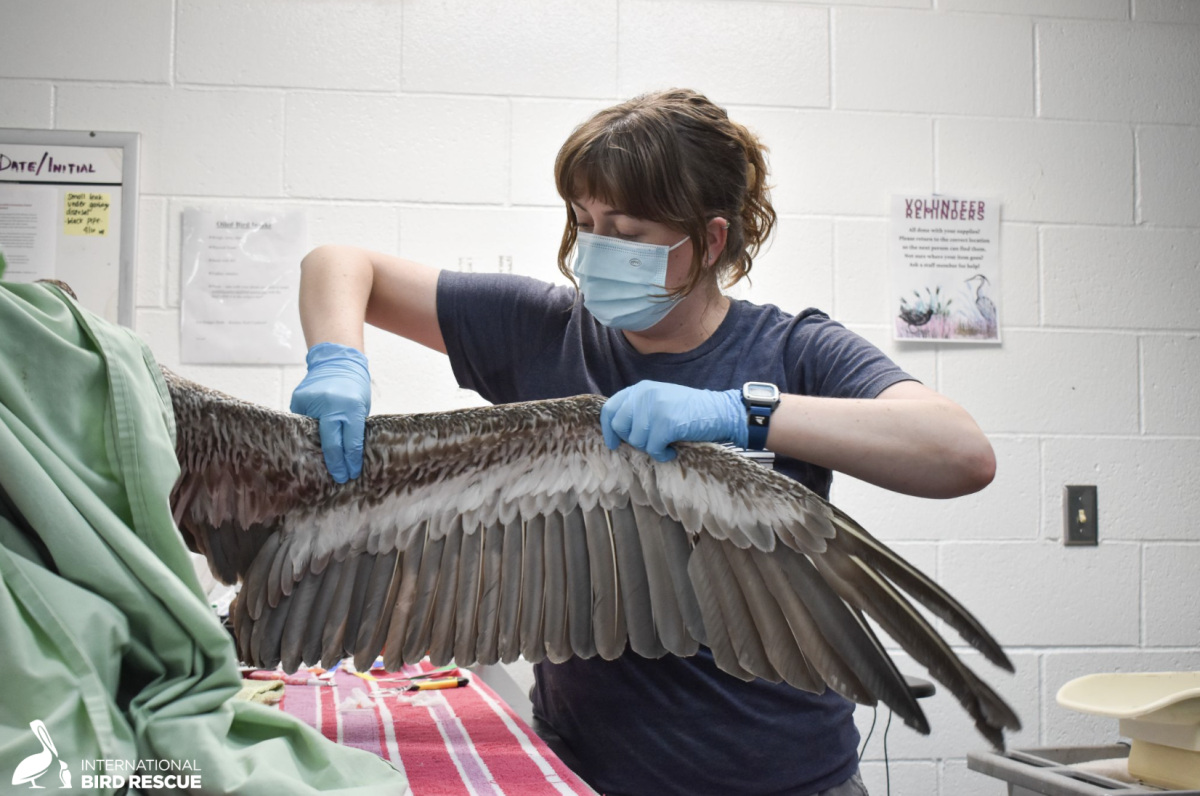If Current Trends Continue What Will Likely Happen to the Pelican Population
Hundreds of sick and dying California brown pelicans have recently been found across the region and are now being treated at various rescue centers along the coast, officials said.
Some of these large birds — known for their distinctive oversize bills — arrive with fractures, likely hit by cars, while others have multiple fish hooks and fishing lines tangled around their bodies, officials said. Many are emaciated and starving.
There is no clear answer as to why so many birds are sick and dying, and state officials are scrambling to perform tests on dead birds to provide some clarity.
More than a hundred birds are being treated at the nonprofit International Bird Rescue's center in San Pedro in Los Angeles County. Some birds are brought to the center from as far north as Santa Barbara and as far south as San Diego. Typically, such facilities take in a few birds for rehabilitation, but the volume of sick and dying birds over the last several days is alarming veterinarians.
"They talk about the canary in the coal mine. This is the seabird in the ocean bringing a message that things are not quite right," International Bird Rescue Chief Executive JD Bergeron said Thursday.
Sick birds, too weak to fly, are being found with various injuries and too little body fat, officials said. Some early theories are that the birds are being hurt by overfishing in the Pacific Ocean, but rescue operators have been assured by state agencies that local sardine and anchovy populations are not scarce.
The California Department of Fish and Wildlife will be performing tests on the dead birds in the coming days.
"CDFW is aware of reports of an increased number of sick and dying brown pelicans in Southern California," Fish and Wildlife spokesperson Tim Daly said in a statement. "We are working quickly to receive some carcasses so we can perform necropsies at the department's Marine Wildlife Veterinary Care and Research Center and the Wildlife Health Laboratory. Until information on cause of death is available, we are unable to provide a likely cause of this problem."
More than three dozen birds have been brought to the nonprofit Wetlands and Wildlife Care Center in Huntington Beach over the last few days, said the center's executive director, Debbie McGuire. About 36 birds have been brought to the center since Monday, but only about 20 have survived.
"About 40%, maybe more, are not making it past that first hour when they come in," McGuire said. "We're feeding them, deworming them and making sure they're taken care of. A lot of them have fishing gear entanglement and others are coming in with low body weight and poor body conditions."
There is a steady trickle of birds from across Southern California being brought to rescue centers like the one in Orange County. McGuire and others consider the usual culprits that cause injuries among birds, such as paralytic shellfish poisoning and domoic acid toxins from algae blooms.
"I don't know what's going on," McGuire said. "It's so hard to keep count in the past few days. What day is it?"

Staff with the International Bird Rescue in San Pedro are treating more than a hundred injured and starving California brown pelicans.
(International Bird Rescue)
In 2010 and 2012, Southern California veterinarians saw a similar crash among the brown pelican population that stretched over several weeks. Around that time, rescue centers saw more young birds in distress, but the latest batch includes older birds. A similar event happened in 2018, but not at the current scale.
"Getting a large number of hungry young birds is sometimes more normal and it can also be a sign of something problematic in the environment. But the fact that we're getting all ages of birds and that this is hitting all pelicans equally, you can almost rule out the young bird inexperience factor," Bergeron said.
Rescue centers are scrambling with limited funds to feed and nurse the brown pelicans, and workers can't help but wonder what warnings this all points to.
"We definitely need to be paying attention and do what we can for the birds right now, and also think about what the big picture is that humans should be concerned about as well," Bergeron said.
Nearly 60 years ago, the California brown pelican was on the brink of extinction. The now-banned pesticide DDT weakened the birds' eggshells, making them so brittle that nesting mothers would crush them.
Anacapa Island in Ventura County is one of the birds' main roosting sites in the United States. In 1970, just one pelican chick was successfully born in captivity on the island, and that same year the federal government listed the bird as an endangered species.
Conservation efforts, and the ban of DDT, helped the bird's population rebound, and by 1985 researchers counted nearly 6,500 newborn pelicans at Anacapa Island. By 2009, the population soared and the bird was taken off the endangered species list.
State officials expect to have more answers in the next few days about what is happening to the brown pelican.
Bergeron said that sometimes rehabilitated birds are released hundreds of miles from where they were found to give them a chance to thrive in a new habitat. But it's still too soon to say how far the current crash is spread across California.
cummingsonely1942.blogspot.com
Source: https://www.latimes.com/california/story/2022-05-19/injured-starving-california-brown-pelicans-found-across-southern-california
0 Response to "If Current Trends Continue What Will Likely Happen to the Pelican Population"
إرسال تعليق